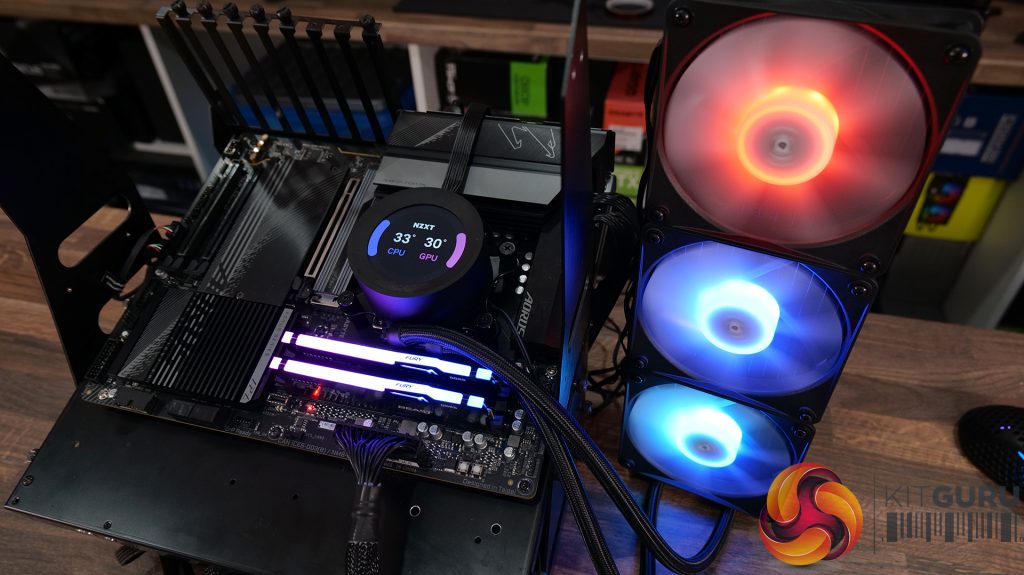
Test System Specifications:
- CPU: AMD Ryzen 9 7950X
- Motherboard: Gigabyte X670 Aorus Elite AX
- Memory: 32GB Kingston Fury FK560C36BBEAK2-32 DDR5-6000
- Graphics card: Gigabyte RX 6700 XT Gaming OC
- Storage: 500GB Corsair MP600 PCIe Gen4 NVME M.2 SSD
- Power Supply: Seasonic Prime TX-1000
- Chassis: Open Test Bench
- Thermal Compound: Arctic MX-6
- O/S: Windows 11 Version 22H2
Testing Methodology:
We are primarily focussing on the performance of each cooler at 100% fan speed and also when locked to 40dBA noise output. We will focus on cooling performance using a manual overclock with all-core frequency and VCORE locked to 5.2GHz/1.3v and Precision Boost Overdrive performance.
- The test data is logged using HWINFO and the final 10 minutes of the data is calculated to find the average CPU temperature and CPU clock multiplier (PBO Test) and then plotted in the charts.
- For testing, we use a 30-minute looped run of Cinebench R23 and record the steady-state CPU temperature at the end of the test. This ensures that the CPU has had ample time to warm up and reach a steady state under all of the coolers.
- The ambient is maintained at 19-21 degrees Celsius. Where there is variation beyond this temperature range, we add extra repeated tests to ensure consistency. However, this is well controlled now with A/C.
- We also test each cooler with at least two fresh installs (typically three) to mitigate the likelihood of poor mounting spoiling results.
- Ambient temperature and humidity are controlled via a mini split air conditioning system inside the test room. Ambient temperature is maintained between 19-21C, Temperature delta figures are shown in the charts (ambient temperature is deducted from the measured component temperature).
Test Results:
Acoustics
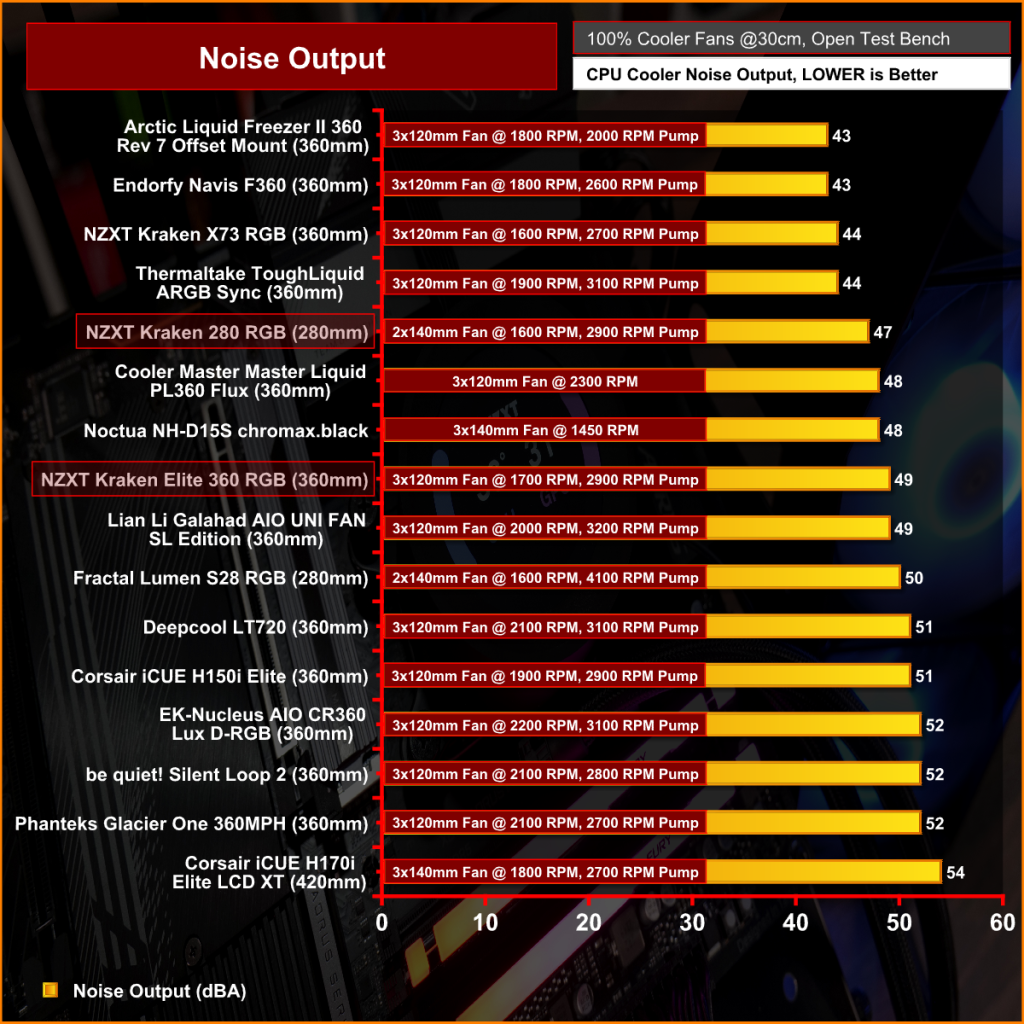
Let’s start by looking at noise output as this will give us a good indication of performance based on noise.
With the fans running at maximum RPM the Kraken Elite 360 isn’t the loudest cooler but at 49dBA the noise is very noticeable over ambient noise, with two fans running at lower RPM the Kraken 280 is 2dBA quieter which doesn’t sound like much but there’s quite a difference in noise output between the two coolers.
Thermal Performance
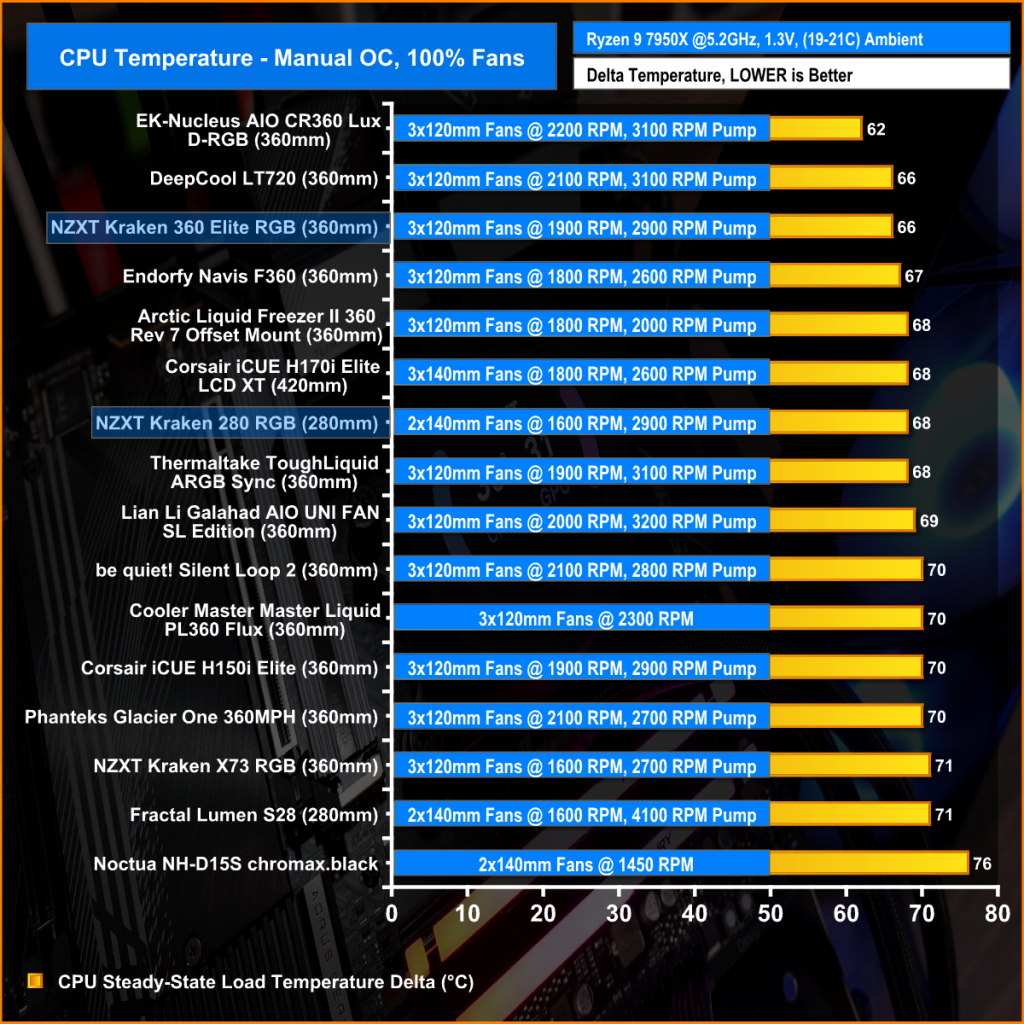
Sticking with fans at maximum RPM, in this configuration the Kraken Elite 360 performs very well, keeping the 7950X average delta temperature at 66°C which places the Kraken Elite 360 in the top three of our chart, the Kraken 280 isn’t far behind either with an average CPU temperature delta of 68°C.
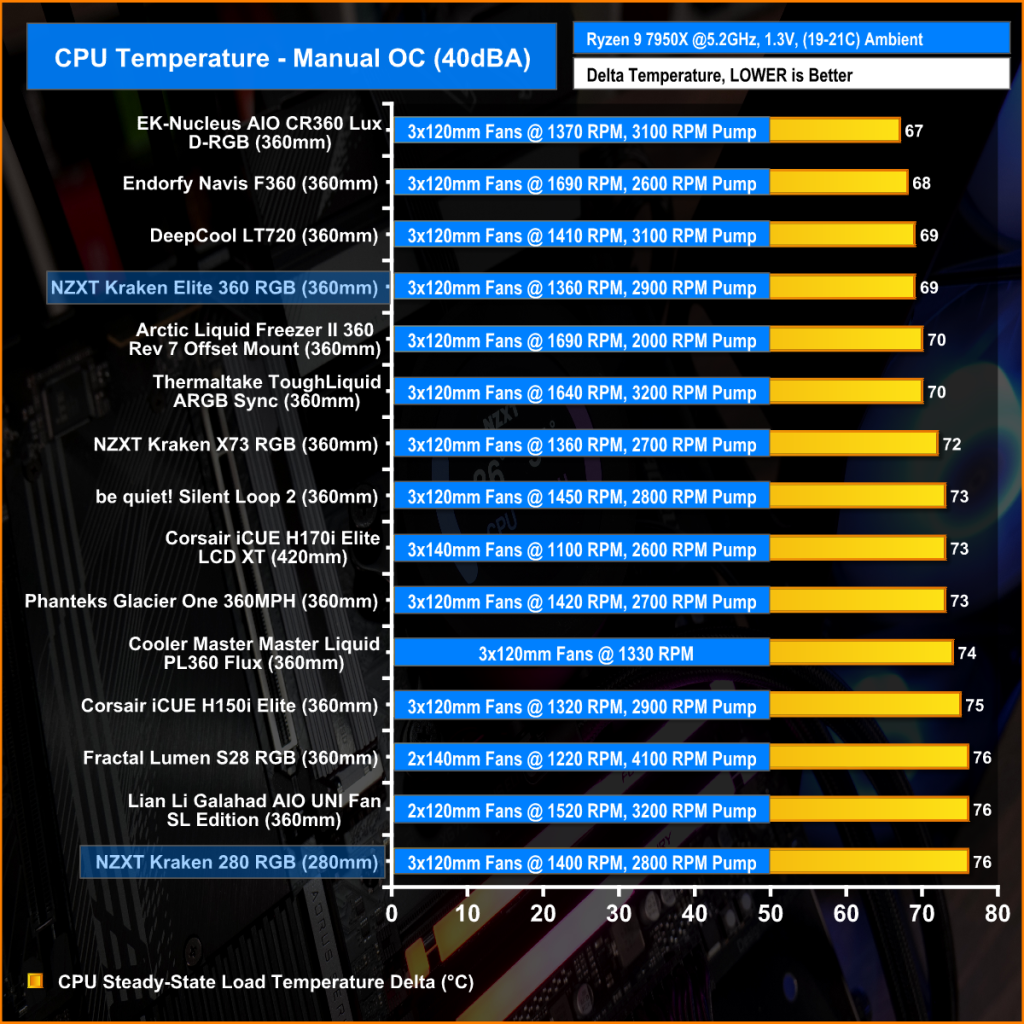
Normalising noise output to 40dBA the Elite 360 is still trading blows with the top coolers that we have tested showing that it has genuinely good thermal performance which is no great surprise as the old Krakens also performed well, and the new F120 fans are doing a good job. However, the Kraken 280 performance tails off with noise normalised which is a little disappointing but is expected of a 280mm unit on this CPU as you can see from the results of the other 280mm AIO that we tested.
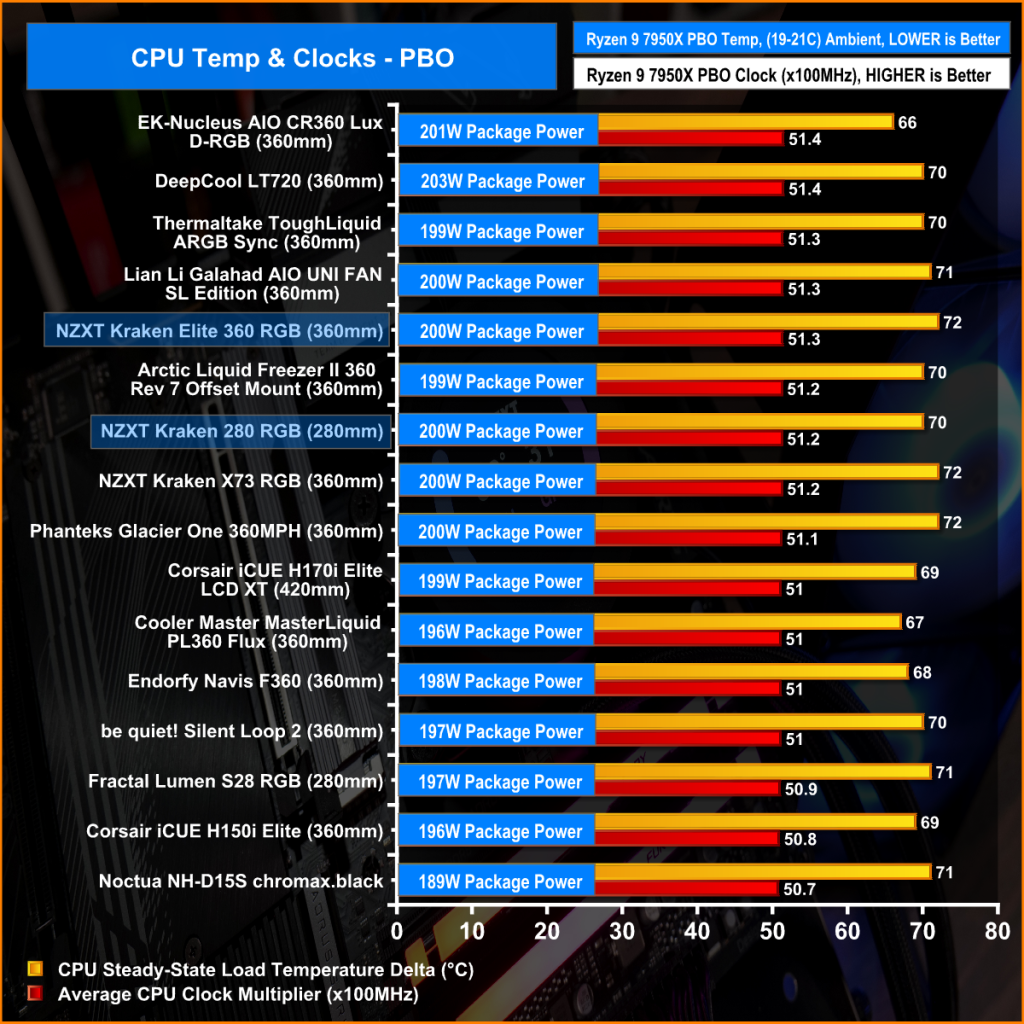
In the PBO test, the difference between CPU delta temperature is small, so the important metrics here are clock speed and cooling power.
The Kraken Elite 360 again performs well holding on to an average clock multiplier of 51.3X at 72°C while handling an average package power of 200W. The 280mm unit isn’t far off with an average 51.2x clock multiplier and also 200W package power which is a good performance from both coolers.
 KitGuru KitGuru.net – Tech News | Hardware News | Hardware Reviews | IOS | Mobile | Gaming | Graphics Cards
KitGuru KitGuru.net – Tech News | Hardware News | Hardware Reviews | IOS | Mobile | Gaming | Graphics Cards


